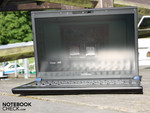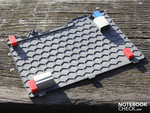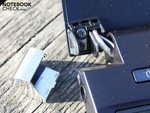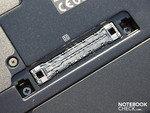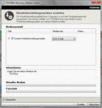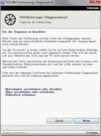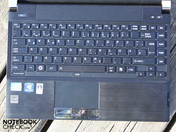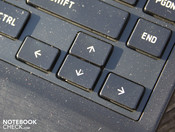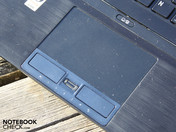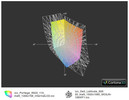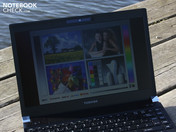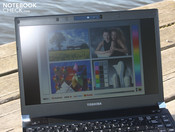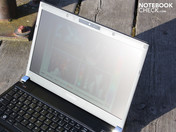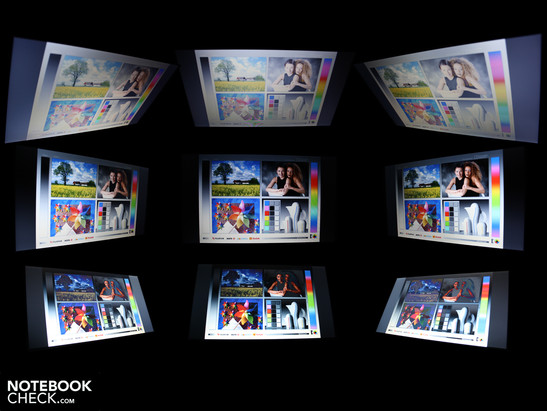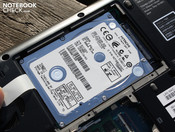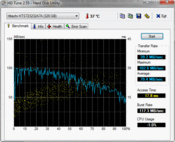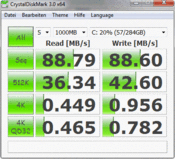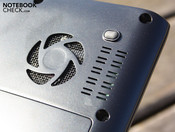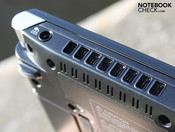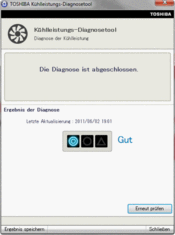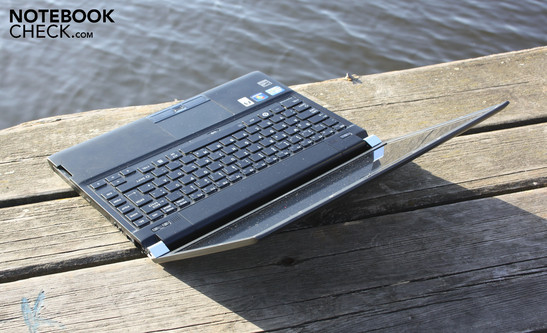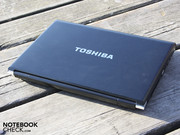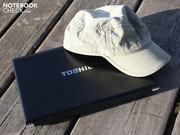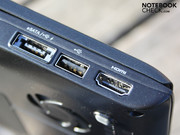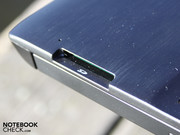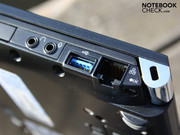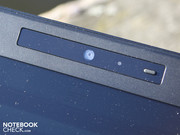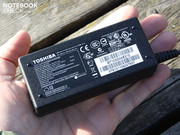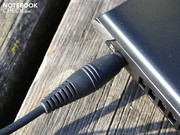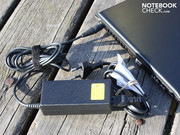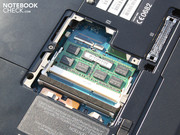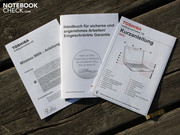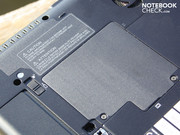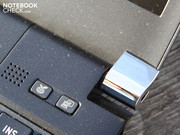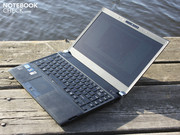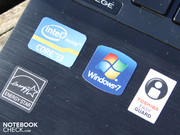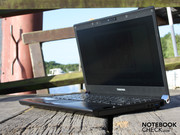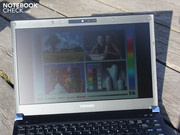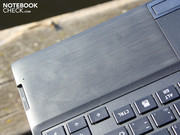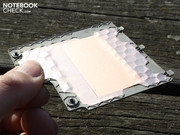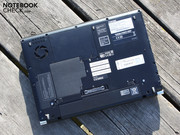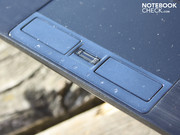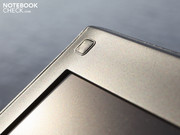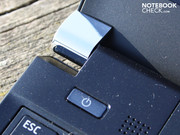Review Toshiba Portege R830-110 Notebook

The Portégé subnotebooks with a 13.3 inch form factor (previously 12.1 inch, e.g. R500) make up the premium segment for handy business notebooks from Toshiba. Light weight, a thin case, and good battery life are combined with business features such as a docking port, a UMTS module, and a fingerprint reader.
Since Toshiba has recognized that not every demanding private user or business person wants to spend 2000 Euros for a subnotebook, the Portégé R830 is currently available in three price classes and feature variants. The R830-10V is the fastest of the three with a Core i7-2620M (2x 2.70GHz), and a 256 GB SSD (from 1980 Euros). The R830-112 with a Core i5-2520M 2x 2.50GHz, and a HDD, is the intermediate model (from 1600 Euros). And last but not least the tested R830-110 has a Core i3-2310M (2x 2.30GHz), and a HDD (from 1130 Euros). In comparison to the two others our tested device is the most affordable Portégé R830.
How well does the affordable R830 fair for mobile use? Can Toshiba's claims for an "HD display with ideal picture quality" be proved accurate? All the answers can be found in the following review.
Case
The tested subnotebook weighs 1.47 kilograms, and is held together by a magnesium case, which is reinforced with an integrated pattern structure (inside) above and below. Thanks to the thin material weight has been saved without compromising the stability. At least thats the theory.
In practice we found the hand resting area and the bottom to give way in some places. Under the DVD drive the case can be dented a bit excessively. The surface of the lid makes a robust impression. Nevertheless we were able to dent this in the middle. Effects on the front of the display panel aren't caused easily by this though.
Summary: The stability of the thin magnesium plastic case is very good taking into consideration the light weight. Especially the base unit cannot be bent with both hands. One thing that is not so impressive are the silver hinge coverings. These are loosely clicked on, and can break off. Underneath these are thin but firm hinges, which are firmly attached to the case.
The magnesium surfaces are lightly brushed and varnished, which gives the impression of a polished aluminum finish on the lid and hand resting area. All the surfaces are grippy. Fingerprints stay behind, but are not easily noticeably due to the matte complexion.
Connectivity
The optical drive is still required by some buyers, even if the manual data exchange can take place via memory sticks or across the network these days. The DVD multi-burner takes away room for potential interfaces, especially since the back doesn't have any ports. Nevertheless, there is still enough space for eSATA, HDMI, and three USB ports, of which the furthest right supports USB 3.0.
The Docking Port on the bottom connects to the Port Replicator PA3838E-1PRP, which provides an additional six USB ports (of which 2 x USB 3.0), and a serial connection for the R830, for approximately 200 Euros (RRP). The Port Replicator is intended as a stress free way to connect peripheral office devices.
Communication
There are ample communication options. Along with Gigabit Ethernet (Intel 82579V Gigabit) and WLAN (Atheros AR9002WB-1NG), there is also a broadband modem on board. The latter of these is a Ericsson F5521gw Mobile Broadband Network Adapter. The SIM card slot is located in the battery compartment. With the integrated Bluetooth 3.0 + HS module (combined with Atheros WLAN), it is possible to communicate with small devices, such as for example a PDA. The predecessor R700 only had Bluetooth 2.0.
The VGA webcam unfortunately only has a resolution of 640x480 pixels. This can be used for video conferencing or for the Toshiba Face Recognition. The picture quality, especially with dim lighting, is not overwhelming but still good enough for less demanding purposes.
Security
A fingerprint reader and Kensington Lock are obviously available. Under the hood there are also further features: Execute Disable Bit (XD-Bit), BIOS with Computrace support, Intel Anti-Theft, hard drive protection with 3D sensor, and a partially waterproof keyboard.
Accessories
Recovery media for Windows 7 Professional (64-bit) have to be burned using Recovery Media Creator. Included with the delivery is a hidden hard drive partition. In addition to this the delivery also includes a small handbook and a short user guide. Regarding the pre-installed software, this includes diverse Toshiba tools (e.g. cooling system diagnosis tool, HWSetup, HDD protection, etc.) as well as programs such as Nero Multimedia Suite 10 Essential, and Nero BackItUp & Burn Autobackup Essentials.
Warranty
The length of the warranty is 24 months (on location collection in Germany and Austria upon registration of the device via the Toshiba Notebook Hotline).
Input Devices
Keyboard
Toshiba has given the Portégé R830 free standing keys with a firm end stop. The surface is unusually smooth, but nevertheless pleasant to use (no greasy fingers). The keys are easy to use accurately thanks to the big distance between them. One downside is unfortunately the short key travel, and a pressure point which is not clear enough. This has a negative effect on the feedback when typing. Business keyboards on the HP Elitebooks, or the Lenovo ThinkPads, are better in this respect.
The layout can be described as a success in our opinion, with the arrow keys separated, and the picture keys as well as the Delete and Home/End keys located all the way on the right side.
Touchpad
The multi-touchpad (Synaptics V7.4) is very big, matte, and has horizontal and vertical scrollbars (not marked visually). The shiny buttons unfortunately have a short travel and a loud click. The fingerprint sensor between the buttons allows logging in with the swipe of a finger. Accidental operation is impossible, since no action is performed without the appropriate application.
Display
The matte 13.3 inch display panel (type not legible) isn't able to stand out from the competition. Its qualities are more or less in line with those of an affordable consumer display, with the exception of the non-reflective surface. One such as this is actually misplaced in a premium subnotebook.
The HD panel has a resolution of 1366 x 768 pixels. This is the standard for the 13 inch form factor (consumer), and has also become proliferated in the business area (e.g. ThinkPad L520) due to the production cost. This is due to the fact that the same panel sizes can be used for consumer as well as business notebooks.
The low contrast of 142:1 makes colors less strong, and contours become less pronounced. This is acceptable for office use, but a bit of a disappointment for professional image editing. The small color space of the R830's display doesn't surprise in light of these facts. sRGB is missed by a long stretch (picture in the middle). Business notebooks such as the Dell Latitude E6520 (FHD, 15.6 inch), or the consumer slimline Samsung 900X (13.3 inch), prove that matte panels can also cover a large color space.
| |||||||||||||||||||||||||
Brightness Distribution: 86 %
Center on Battery: 196 cd/m²
Contrast: 142:1 (Black: 1.38 cd/m²)39.68% AdobeRGB 1998 (Argyll 2.2.0 3D)
56.7% sRGB (Argyll 2.2.0 3D)
38.22% Display P3 (Argyll 2.2.0 3D)
What the R830 display panel would really need is a good brightness level. On average we measured a mere 180 cd/m². The maximum measured by the Mavo Monitor is an illumination of 196 cd/m² in the middle. Taking into consideration the sunny summer and potential use outdoors, a luminance in excess of 250 cd/m² would have been preferable. This way the display stays dim most of the time despite the matte surface.
The photographs show the display panel with sunlight. When looking from the front with indirect sunlight, the luminance is sufficient (middle picture), from the sides the display becomes much dimmer though (left). Under direct sunlight the display is too dark for working comfortably (right). Outdoor users will have to find a spot in the shade in these circumstances.
The horizontal viewing angles are only stable up to about 45 degrees. Should the eyes move above or below (vertically), then writing is legible up to about 35 degrees. Colors are already inverted from about 10 degrees though. To demonstrate this we have provided the following video.
Performance
Toshiba's 13.3 inch R830 is equipped with an Intel Core i3-2310M (2 x 2.1 GHz). The dual-core CPU doesn't have Turbo Boost, but does support Hyper-Threading (processes 4 threads). The CPU's power consumption lies at 35 Watts according to TDP. Of this the two cores require 25 Watts. 10 Watts are used by the integrated Intel HD 3000 graphics solution, and the internal DDR3 memory controller.
As usual there are 4096 MB of DDR3 RAM on board, whereby only one of the two sockets is in use (1 x 4096 MB RAM). The hard drive is a Hitachi (HTS723232A7A364) with a rotational speed of 7200 rpm and a capacity of 320 GB.
The Sandy Bridge i3 processor manages to score almost as many points in the single-core Cinebench R10 Single 32-bit benchmark (2704) as significantly faster clocked predecessors such as the i3-380M (2x2.5GHz, ~2.800 points) with a 2.1 GHz clock speed. The bigger brother i5-2520M (2.3GHz) CPU manages a faster 3800 points (64-bit) thanks to Turbo Boost.
When it comes to daily use, multi-threading is more relevant than single-core processing though (Cinebench R10 Multi 64-bit). The i3-2310M manages 7237 points in this discipline, which is almost as much as a i3-380M (~7800). In this case the option of a Core i5 version of the R830 can be a definite advantage with respect to speed: The i5-2520M manages about 10500 points thanks to Turbo Boost 2.0.
| PCMark Vantage Result | 5186 points | |
Help | ||
The i3-2310M is slower than the i5-2520M (more expensive R830 variant), which is to be expected. How does this effect the performance of the whole system? The PCMark Vantage benchmark gives the answer to this question. The test determined a score of 5186 points. This is more or less the same as older systems with a Core i3-380M (e.g. Samsung RV511: 5432).
Compared to the model variants with a Core i5-2520M (5870 to 7300) or a i7-2620M (7800 e.g. ThinkPad T420), our tested device falls behind. These values apply to HDD devices. In cases where a SSD is involved, our i3+HDD combination doesn't stand a chance: 14150 points (XMG A501, i7-2620M, SSD). It can be expected that more expensive SSD variants of the R830 will miss this performance level by a small margin due to the lack of a GPU, but nevertheless provide a considerable performance.
The 3DMark2006 benchmark, which measures the gaming suitability, scores 3053 points. The 2010 Intel HD generation (also CPU integrated) only managed 1500 points on average (depending on CPU +/- 200 points). Gaming is possible within a limited capacity with the Intel HD 3000. The dedicated entry level GPU Radeon HD 6470M is only 3% faster (3DMark2006), whereby the drivers are better adapted to games. Less demanding games, such as Fifa 11, or older games (Left4Dead), run smoothly with high detail settings. See the articles Intel HD Graphics 3000 Graphics solution, and the detailed page for the HD Graphics 3000 for details.
| 3DMark 05 Standard | 5497 points | |
| 3DMark 06 Standard Score | 3053 points | |
Help | ||
The 320 GByte hard drive manufactured by Hitachi is relatively fast, even though it is a rotating HDD (7200 rpm). It reads at 79 MByte/s in sequential read (HD Tune). The CrystalDiskMark benchmark measured 89 MByte/s in our test (different test routine than HD Tune). The HDD Score from PCMark Vantage resulted in 3859 points (sub-score). This is significantly less than SSDs can score in our other test devices (14000 up to 20000 points, e.g. XMG A501). So that nothing goes wrong during mobile use, a 3D sensor is attached. This parks the read and write heads as a result of concussions.
Emissions
System Noise
Without load, such as when surfing the web or working with outlook, the system noise varies between 31 and 34 dB(A). Due to the small heat pipe only having a limited absorption capability on the CPU, the cooling fan already turns up following short bursts of load (e.g. after 15 seconds WPrime CPU test).
Under a constant maximum load for the processor and the integrated HD 3000, the cooling fan turns up to a maximum of 47 dB(A). If the load is limited to the CPU (Prime95), the noise level stays at 44 dB(A). At least the cooling proves itself to be very adaptive, since the noise level drops to 33.4 dB(A) after only 15 seconds of the load ceasing.
Altogether the behavior of the cooling system is reasonable, and the underlying noise level of the fast HDD is almost not noticeable (31.5 dB(A), without disturbing vibrations). The maximum level does make us thoughtful though, since this case should also be able to cool a Core i7-2620M (dual-core, Turbo 3.4 GHz + Turbo 2.0). This is possible in practice nevertheless, since the i7 and i3 have an identical TDP of 35 Watts. The cooling system diagnosis tool at least gives the i3 system a 'good' rating (test with 19 minutes of load).
Noise Level
| Idle |
| 31.1 / 31.1 / 31.4 dB(A) |
| HDD |
| 31.5 dB(A) |
| DVD |
| 36.1 / dB(A) |
| Load |
| 46.6 / 47.2 dB(A) |
 | ||
30 dB silent 40 dB(A) audible 50 dB(A) loud |
||
min: | ||
Temperature
When it comes to the heating of the case there are some serious shortcomings. In an idle state and during office use, a scenario which is the most applicable to the Protege, some areas merely become lukewarm (about 30 degrees). The bottom reaches a maximum of 34 degrees in some places.
The maximum temperatures during the stress test are considerably higher with 43 (top) and 44 degrees Celsius. This is not surprising considering the small and light case. The hand resting area stays lukewarm at all times though, and we measured a maximum of 32 degrees. Core Temp measured a processor temperature of 90 degrees (clock speed @2.095 MHz) following the several hour stress test.
(±) The maximum temperature on the upper side is 42.8 °C / 109 F, compared to the average of 35.9 °C / 97 F, ranging from 21.4 to 59 °C for the class Subnotebook.
(±) The bottom heats up to a maximum of 43.8 °C / 111 F, compared to the average of 39.4 °C / 103 F
(+) In idle usage, the average temperature for the upper side is 29.3 °C / 85 F, compared to the device average of 30.7 °C / 87 F.
(+) The palmrests and touchpad are reaching skin temperature as a maximum (32.2 °C / 90 F) and are therefore not hot.
(-) The average temperature of the palmrest area of similar devices was 28.3 °C / 82.9 F (-3.9 °C / -7.1 F).
Speakers
Two speakers are located on the left and right sides above the keyboard. The audio is concentrated in the high frequencies, with little bass, and sounds thin. Due to this the use of external speakers or high quality headphones is advised for listening to music. The test using the 3.5 mm headphone socket didn't show any audio artifacts such as noise.
Battery Life
The battery life of six hours makes up for the bad audio quality of the speakers. These times are appropriate for a subnotebook. What is impressive is that the battery does not have a very high capacity (66 Wh, unsurprisingly). The WLAN test (surfing the web) ends after 5:58 hours, a DVD movie runs for 5:19 hours. The brightness of the TFT was set to 100 cd/m² (medium setting) during the WLAN and DVD tests.
Disadvantage: The charging time for the battery lasted a very long time with 4:38 hours. Optimizing the battery life is possible with the HWSetup tool. With this the dynamic CPU clocking can be set to 'always low' (multi-processing, webcam, SATA-mode, etc.). We tested the delivery state, in which all the devices are activated and the settings are adjusted for performance.
The power consumption of the whole system shows a big gap between an idle state and a high load (CPU+IGP). This is typical for an Intel Core processor from 2010 and 2011. The idle power consumption of the Portégé lies at 7.7 Watts (power saving, lowest brightness), and 12 Watts (max. performance, max. brightness). The stress scenario shows the opposite case. A 3DMark2006 benchmark (IGP Intel HD 3000) requires 53 Watts. During the stress test the Core i3 is added to this, and we measured 55 Watts. The small 65 Watt AC adapter (247 grams) is suitably dimensioned.
| Off / Standby | |
| Idle | |
| Load |
|
Verdict
The most affordable version of the Portégé R830 series (R830-110) can keep up with the current more qualitative business subnotebooks in many respects. This is no surprise, since the chassis has already been used by Toshiba successfully with the Portégé R700. The more expensive R830 variants (Core i7, i5, SSD) may be based on better performing components, but they don't improve the core features of the subnotebook.
Those that invest 1130 Euros in a Portégé, receive an impressively light subnotebook with a battery life of between five and six hours. The performance with an Intel Core i3 processor from the newest generation, and a rotating hard drive, may lag behind that of an i7/i5 and SSD, but is nevertheless sufficient for office use while on a train or in an airport waiting area.
Owners don't need to make any compromises when it comes to connectivity, since this is sufficient for the small form factor with a docking port, eSATA, and USB 3.0. The Toshiba website also lists Wireless Display as a feature. Our tested device contained an Atheros WLAN card though, with which this is not possible. A DVD drive doesn't have to be foregone either, just like an integrated UMTS module (standard in all R830 versions).
The list of disadvantages is relatively small, although this highlights important elements such as the display and the input devices. The display doesn't satisfy high standards as far as the color space, contrast, or viewing angles are concerned. In addition to this comes the relatively low brightness of 196 cd/m². Due to this the display is dim and difficult to read from under direct sunlight. The keyboard provides a generous layout and a firm supporting surface. Fast typing is possible with this, although a short key travel (also touchpad buttons), and a narrow pressure point, have a negative impact on the feedback. Nevertheless the keyboard is significantly better than those on consumer notebooks.
The manufacturing quality has some weak spots in a few details (hinge covers, bending). Considering the light weight (thin material) the stability shortcomings can be accepted though. A Portege R830 (1468 grams, magnesium) is unfortunately not comparable to a Vostro 3350 (2190 grams, aluminum), or an Apple Macbook Pro 13 (2004 grams, aluminum unibody) as far as stability is concerned. These 13.3 inch devices are elephants in comparison to the Portégé. The 13" MacBook Air comes comparatively close to these thanks to its aluminum unibody case.
As long as the dim display doesn't disturb, and no workstation tasks are performed with the R830-110, then the 13.3 inch device is a viable alternative for all those on the search for a subnotebook with a long battery life, integrated UMTS modem, docking port, and the performance of a mid-range notebook.


 Deutsch
Deutsch English
English Español
Español Français
Français Italiano
Italiano Nederlands
Nederlands Polski
Polski Português
Português Русский
Русский Türkçe
Türkçe Svenska
Svenska Chinese
Chinese Magyar
Magyar